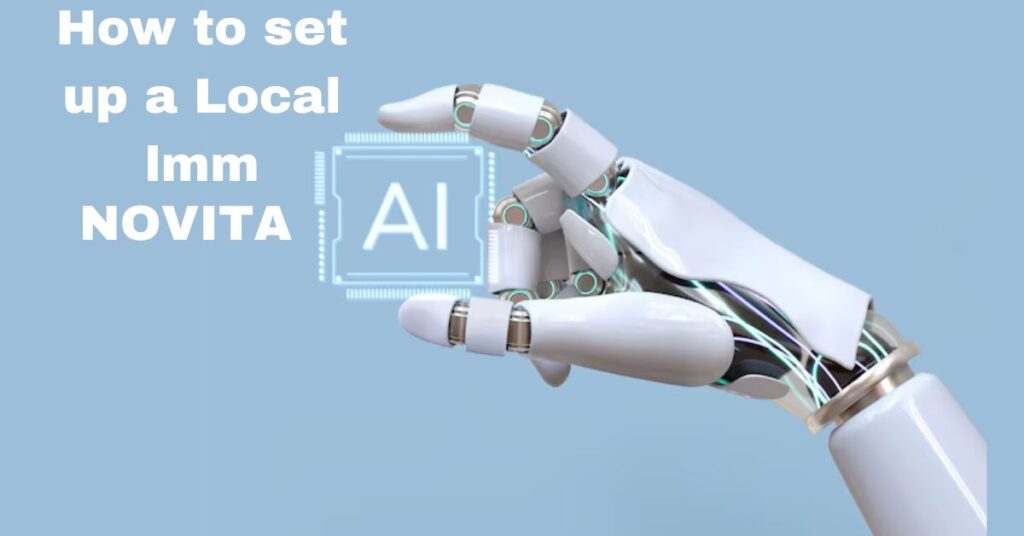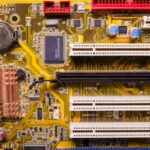The rise of AI technologies has paved the way for innovations that bring powerful capabilities closer to users How to Set Up a Local LMM Novita AI. Novita AI, an advanced language model machine (LMM), has emerged as a popular tool for personal and professional projects requiring artificial intelligence applications. Setting up a local version of Novita AI offers numerous benefits, including data security, faster processing times, and independence from internet connectivity. If you’re eager to deploy Novita AI locally, this comprehensive guide will walk you through the entire process.
Understanding the Basics How to Set Up a Local LMM Novita AI. Novita AI
Before diving into the setup process, it’s essential to understand what Novita AI is and why a local deployment might be beneficial. Novita AI is a versatile language model designed to perform a variety of tasks such as natural language processing, machine learning predictions, and data analysis. It is particularly appealing to users seeking customizable AI solutions tailored to their unique requirements.
Setting up Novita AI locally ensures that all data processing occurs within your own infrastructure, safeguarding sensitive information. Moreover, running the system locally eliminates delays caused by internet latency, offering immediate responses and uninterrupted performance. A local setup also provides the flexibility to experiment with configurations without external dependencies, making it an ideal choice for developers, researchers, and businesses.
Hardware and Software Requirements
Setting up Novita AI locally begins with ensuring your system meets the necessary hardware and software requirements. The local deployment of an LMM like Novita AI often demands robust hardware capabilities, especially when dealing with high computational workloads. A machine equipped with a powerful CPU, a compatible GPU (such as NVIDIA for CUDA support), and a minimum of 16GB RAM is recommended. For optimal performance, consider GPUs with at least 8GB of VRAM and SSD storage for faster data access.
On the software side, a compatible operating system such as Linux, Windows, or macOS is essential. You will also need a Python environment, as most AI frameworks are developed in Python. Ensure you have the latest version of Python and popular libraries such as TensorFlow or PyTorch. Additionally, having package managers like pip or conda installed will make managing dependencies smoother.
Downloading Novita AI and Related Files
After setting up the hardware and software, the next step is downloading the necessary files for Novita AI. Visit the official Novita AI website or its repository on platforms like GitHub to access the model files and documentation. Depending on your requirements, you may choose a pre-trained model or a base version for custom training.
Read Also: ALHS 1011 Savannah Tech Quizlet: A Comprehensive Guide
Ensure you download all associated files, including configuration files, pre-trained weights, and any required datasets. Proper organization of these files into a designated directory will simplify the installation process. If the files are hosted on cloud platforms, tools like wget or curl can streamline the downloading process.
Installing Dependencies
Installing the required dependencies is a critical step in setting up Novita AI. Start by setting up a virtual environment to avoid conflicts with other Python packages on your system. Using tools like venv or conda creates a clean workspace for your Novita AI setup. Activate the environment and proceed to install the necessary libraries and frameworks.
Refer to the documentation for a list of dependencies specific to Novita AI. These might include libraries like NumPy, Pandas, Scikit-learn, and others. Install these packages using pip or conda commands. If Novita AI relies on GPU acceleration, ensure that your system has CUDA and cuDNN installed, along with their respective versions compatible with your GPU.
Configuring the Environment
Once the dependencies are installed, you’ll need to configure the environment to suit Novita AI’s requirements. This involves setting environment variables, modifying configuration files, and verifying compatibility. Create a configuration file tailored to your hardware specifications and intended use cases. For instance, allocate memory resources, specify the GPU for processing, and define the model’s input and output formats.
Additionally, ensure that all paths to datasets, model files, and dependencies are correctly defined in the configuration file. This step minimizes errors during runtime and ensures seamless operation. Test the environment by running basic commands to verify that all dependencies and paths are functioning as expected.
Launching Novita AI Locally
With the environment set up and configured, it’s time to launch Novita AI locally. Navigate to the directory containing the model files and execute the appropriate script or command to initialize the AI. If the system includes a graphical user interface (GUI), launch the GUI to access additional features and settings.
During the initialization process, the system will load the model files, allocate resources, and prepare for operation. This step may take a few minutes, depending on the size of the model and the speed of your hardware. Once the system is fully operational, test its functionality by running sample tasks or queries. For example, input a simple command to gauge its natural language processing capabilities and ensure the output aligns with expectations.
Training and Fine-Tuning the Model
While pre-trained models are sufficient for many applications, you may want to fine-tune Novita AI for specific tasks or domains. Fine-tuning involves training the model on additional datasets to enhance its performance in niche areas. For instance, if your project involves legal text analysis, you can train Novita AI using legal documents to improve its accuracy.
To fine-tune the model, prepare a labeled dataset and ensure it is formatted correctly. Use machine learning frameworks like TensorFlow or PyTorch to run training scripts, specifying the dataset and model parameters. Monitor the training process for loss reduction and accuracy improvement. Once training is complete, save the updated model and integrate it into your local setup.
Optimizing Performance
Optimizing Novita AI for performance ensures smooth operation and efficient resource utilization. Begin by monitoring system performance during usage, focusing on metrics like memory consumption, CPU and GPU utilization, and response times. If the system struggles with large datasets, consider implementing batch processing to divide the workload into smaller chunks.
Adjusting the model’s parameters, such as batch size, learning rate, or inference thresholds, can also improve performance. Additionally, consider enabling mixed-precision training if supported by your hardware, as it speeds up computation without compromising accuracy. Regularly update the software, dependencies, and drivers to benefit from the latest optimizations and bug fixes.
Read Also: how to install tmodloader version v2024.05.3.1
Troubleshooting Common Issues
During the setup process, you might encounter challenges such as installation errors, compatibility issues, or performance bottlenecks. Start by consulting the official documentation and community forums for solutions. Errors related to missing dependencies can often be resolved by reinstalling the required libraries or updating your Python environment.
For GPU-related issues, ensure that your system has the correct versions of CUDA and cuDNN installed. If the system fails to initialize the model, verify that all file paths are correct and that the configuration file is error-free. Address memory-related issues by upgrading hardware or adjusting model parameters to reduce resource consumption.
Conclusion
How to Set Up a Local LMM Novita AI? Setting up a local LMM like Novita AI may seem daunting, but with careful preparation and attention to detail, it becomes a manageable task. From ensuring hardware readiness to configuring the environment and fine-tuning the model, each step plays a vital role in achieving a seamless and efficient setup. The benefits of running Novita AI locally, including enhanced data security, faster processing, and greater flexibility, make the effort worthwhile.
By following the steps outlined in this guide, you’ll be well-equipped to harness the full potential of Novita AI for your projects. Whether you’re developing applications, conducting research, or exploring AI-driven innovations, a local Novita AI setup empowers you to unlock new possibilities.







